Related Research Articles

Shandong University is a public research comprehensive university in Jinan,Shandong with one campus in Weihai,Shandong and one campus in Qingdao,Shandong and is supported directly by the national ministry of education. It is one of the largest universities in China by student population.

Wuhan University is a public research university in Wuhan,Hubei. The university is sponsored by the Ministry of Education. Wuhan university was founded as one of the four elite universities in the early republican period of China and is considered as the oldest university in China according to its university history document. Wuhan University is located at Luojia Hill,with palatial buildings blending Chinese and Western styles. It is ranked by many as one of the most beautiful campuses in China for decades.

The China University of Geosciences is a key national university directly under the administration of the Education Ministry of the People's Republic of China. It is located in Wuhan,the capital of Central China's Hubei Province. It is a Chinese state Double First Class University Plan university identified by the Ministry of Education.

Ali Khademhosseini is the Director and CEO of the Terasaki Institute and former professor at the University of California-Los Angeles where he held a multi-departmental professorship in Bioengineering,Radiology,Chemical,and Biomolecular Engineering and the Director of Center for Minimally Invasive Therapeutics (C-MIT). From 2005 to 2017,he was a professor at Harvard Medical School,and the Wyss Institute for Biologically Inspired Engineering. His studies have been cited ~100,000 times. Khademhosseini is best known for developing hydrogels for tissue engineering and bioprinting.
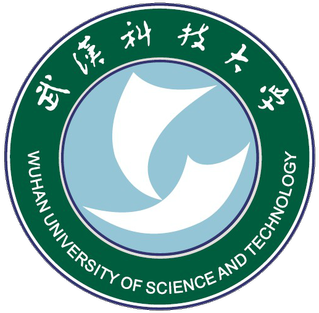
The Wuhan University of Science and Technology (WUST) is a public,comprehensive,research university located in Wuhan,the capital of Hubei province,China. It is a key university established and managed by Hubei province and by the Chinese Ministry of Education.

Chad Alexander Mirkin is an American chemist. He is the George B. Rathmann professor of chemistry,professor of medicine,professor of materials science and engineering,professor of biomedical engineering,and professor of chemical and biological engineering,and director of the International Institute for Nanotechnology and Center for Nanofabrication and Molecular Self-Assembly at Northwestern University.

Jinggangshan University is in the Jinggangshan Mountains in Qingyuan District,Ji'an city of Jiangxi province in China. JGSU is jointly supported by the Ministry of Education of the People's Republic of China and the People's Government of Jiangxi Province,pair-assisted by Tongji University and authorized by Nanjing Military Region for cultivation of military talents and cadres.

Hubei University,colloquially known in Chinese as Huda was founded in 1931 and is as a key comprehensive university in Hubei Province,People's Republic of China. The University originated in 1931,starting from what was then Hubei Provincial College of Education. Established with approval from the national government,its first director was Huang Jianzhong. The College moved between locations and changed its name several times during its half-century of development. Since 1984,it has been known as Hubei University.

Changchun University of Science and Technology is a key university in Changchun,Jilin,China,previously known as Changchun Institute of Optics and Fine Mechanics. It was founded by Wang Daheng in 1958.
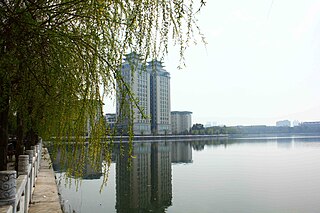
South-Central Minzu University is a national university located in Hubei province's capital Wuhan,directly under the State Ethnic Affairs Commission of PRC. It is a comprehensive university founded in 1951 as South Central College for Nationalities. In March 2002,the school adopted the name South Central University for Nationalities. It is one of the six national higher education institutes for ethnic groups in China.
Sean X. Sun is an American biophysicist.
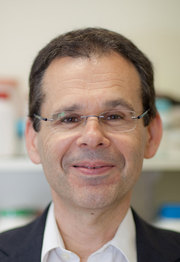
Anthony Steven Weiss AM PhD FRSC FTSE FRSN FRACI,FTERM,FBSE is a university researcher,company founder and entrepreneur. He is the leading scientist in human tropoelastin research and synthetic human elastin. He holds the McCaughey Chair in Biochemistry,heads the Charles Perkins Centre Node in Tissue Engineering and Regenerative Medicine,and is Professor of Biochemistry and Molecular Biotechnology at the University of Sydney. His discoveries are on human elastic materials that accelerate the healing and repair of arteries,skin and 3D human tissue components. He is a Fellow of the Royal Society of Chemistry. Weiss is on the editorial boards of the American Chemical Society Biomaterials Science and Engineering,Applied Materials Today (Elsevier),Biomaterials,Biomedical Materials,BioNanoScience (Springer) and Tissue Engineering. He is a biotechnology company founder,promoter of national and international technology development,and has received national and international awards,including the Order of Australia.
Wolfgang Parak is a German Professor at the Institute for Nanostructure and Solid State Physics of the University of Hamburg. He is head of the Biofunctional Nanomaterials Unit at CIC biomaGUNE,San Sebastian,Spain. He received his PhD in 1999 from Ludwig Maximilians Universität München,Germany. From 2000 to 2002,he was Postdoc at the Department of Chemistry at the University of California at Berkeley under Paul Alivisatos. From 2007 to 2017,he was Professor of Experimental Physics at the Philipps-University of Marburg,Germany.
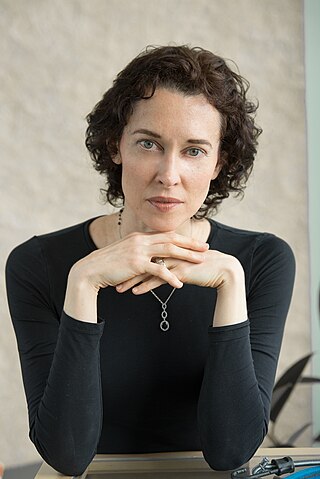
Jennifer Hartt Elisseeff is an American biomedical engineer,ophthalmologist and academic. She is the Morton Goldberg Professor and Director of the Translational Tissue Engineering Center at Johns Hopkins Department of Biomedical Engineering and the Wilmer Eye Institute with appointments in Chemical Engineering,Biomedical Engineering,Materials Science and Orthopedic Surgery. Elisseeff's research is in the fields of regenerative medicine and immunoengineering. She was elected a Fellow of the American Institute for Medical and Biological Engineering,the National Academy of Inventors,and a Young Global Leader by the World Economic Forum. In 2018,she was elected to the National Academy of Engineering for "development and commercial translation of injectable biomaterials for regenerative therapies." That same year,she was also elected to the National Academy of Medicine,and in 2019 she received the NIH Director's Pioneer Award. Her research has been cited over 23,000 times and she has an h-index over 75.
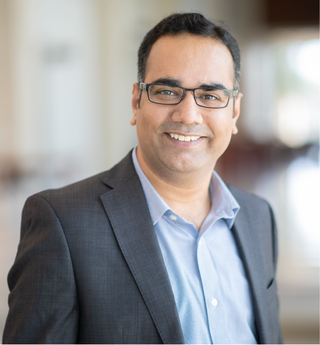
Akhilesh K. Gaharwar is an Indian academic and an associate professor in the Department of Biomedical Engineering at Texas A&M University. The goal of his lab is to understand the cell-nanomaterials interactions and to develop nanoengineered strategies for modulating stem cell behavior for repair and regeneration of damaged tissue.
Zhuo Renxi was a Chinese chemist who specialized in biomaterial research. He served as professor and Chair of the Department of Chemistry of Wuhan University. He was an academician of the Chinese Academy of Sciences and a Fellow of Biomaterials Science and Engineering.

Li Lanjuan,also romanized as Lan-Juan Li,is a Chinese epidemiologist and hepatologist. She is a professor at Zhejiang University School of Medicine,an academician of the Chinese Academy of Engineering,and serves as the director of the State Key Laboratory for Diagnosis and Treatment of Infectious Diseases. She developed Li-NBAL,an artificial liver support system that is used to sustain the lives of people suffering from acute liver failure,and won multiple national awards for her roles in combatting the SARS,H1N1,and H7N9 epidemics.

Chunying Chen is a Chinese chemist who is a professor at the National Center for Nanoscience and Technology. Her research considers nanoscale biological interactions. She was awarded the 2021 Royal Society of Chemistry Environment,Sustainability and Energy Award. She is a Fellow of the American Institute for Medical and Biological Engineering and the Royal Society of Chemistry.
Kalina A. Hristova is a Bulgarian–American engineer. She is a professor of materials science and engineering at Johns Hopkins University's Whiting School of Engineering.
Thomas George Thundat is an American scientist. He is currently the Empire Innovation Professor of Chemical &Biological Engineering at the University at Buffalo. Thundat is one of the pioneers in the field of nanosensors and a leading expert on microcantilevers.
References
- 1 2 3 4 "Hai-Quan Mao". Johns Hopkins University. Archived from the original on August 8, 2019. Retrieved August 8, 2019.
- ↑ "Yòu Yī Jùxīng Yǔnluò! Wǔhàn Dàxué 5 Tiānnèi Tòngshī 2 Wèi Yuàn Shì!" 又一巨星陨落!武汉大学5天内痛失2位院士!. The Paper (in Chinese). August 7, 2019. Archived from the original on August 8, 2019. Retrieved August 8, 2019.
- ↑ "Měiguó Yuēhàn Huòpǔjīnsī Dàxué Máo Hǎiquán Jiàoshòu Lái Wǒ Suǒ Xuéshù Jiāoliú" 美国约翰霍普金斯大学毛海泉教授来我所学术交流. Institute of Chemical Industry of Forest Products (in Chinese). September 26, 2018. Archived from the original on August 8, 2019. Retrieved August 8, 2019.
- ↑ "Dr. Hai-Quan Mao Inducted into Medical and Biological Engineering Elite". AIMBE. April 10, 2018. Archived from the original on August 8, 2019. Retrieved August 8, 2019.